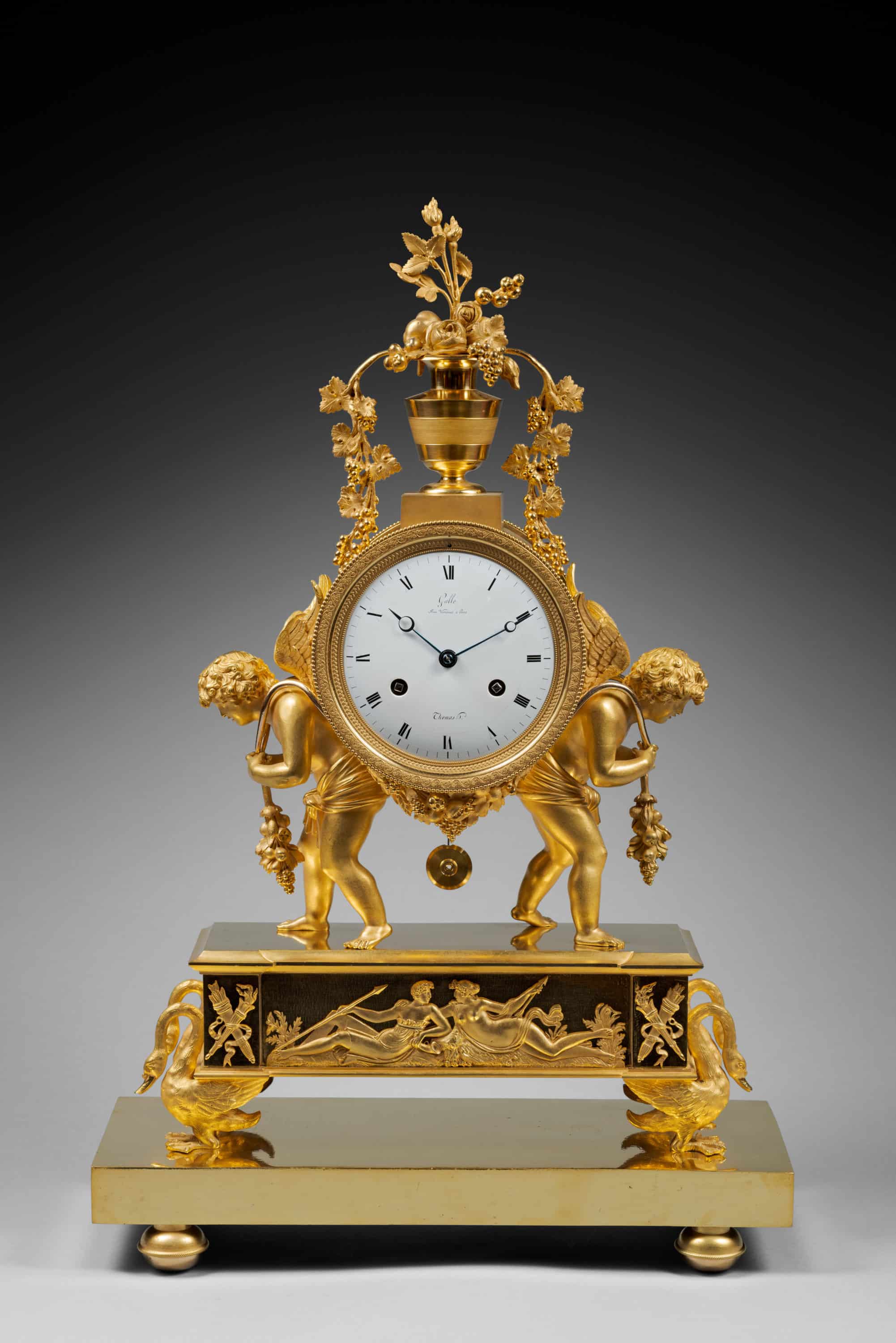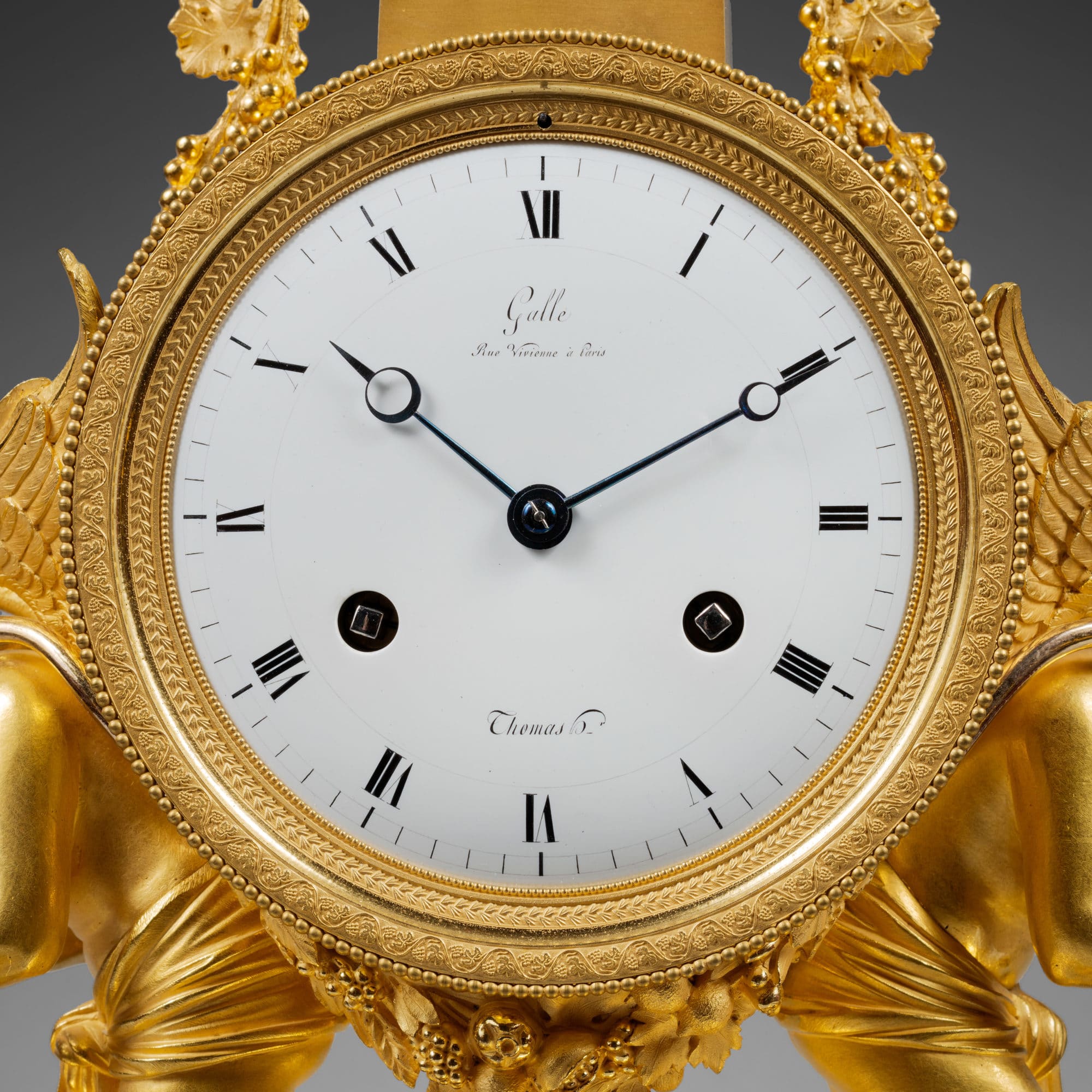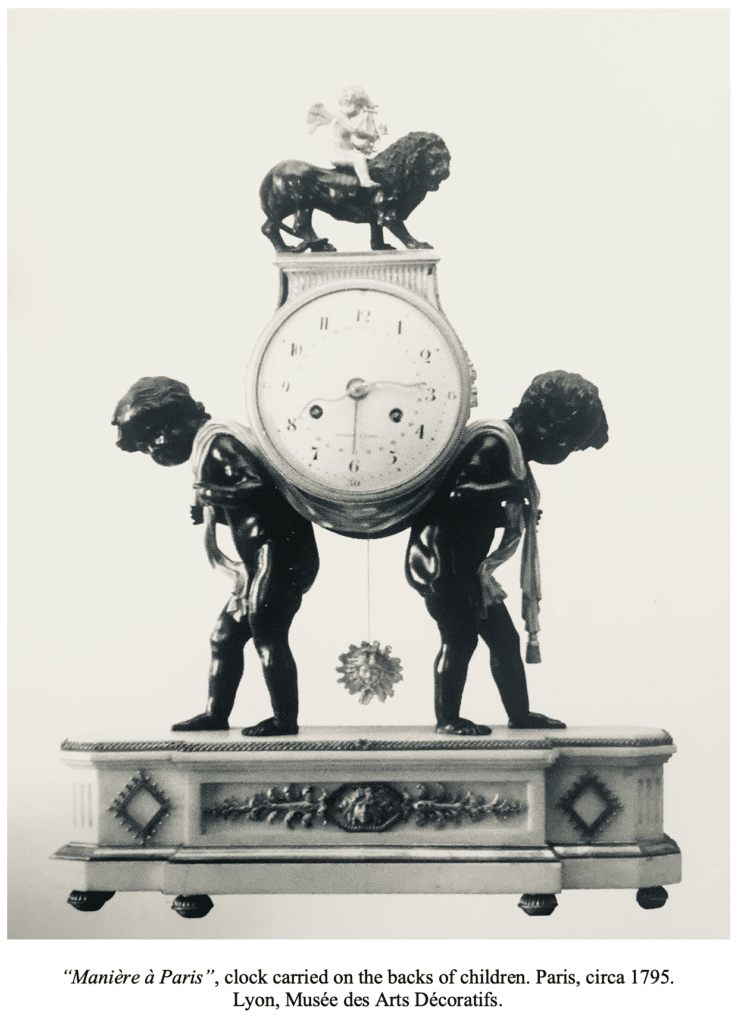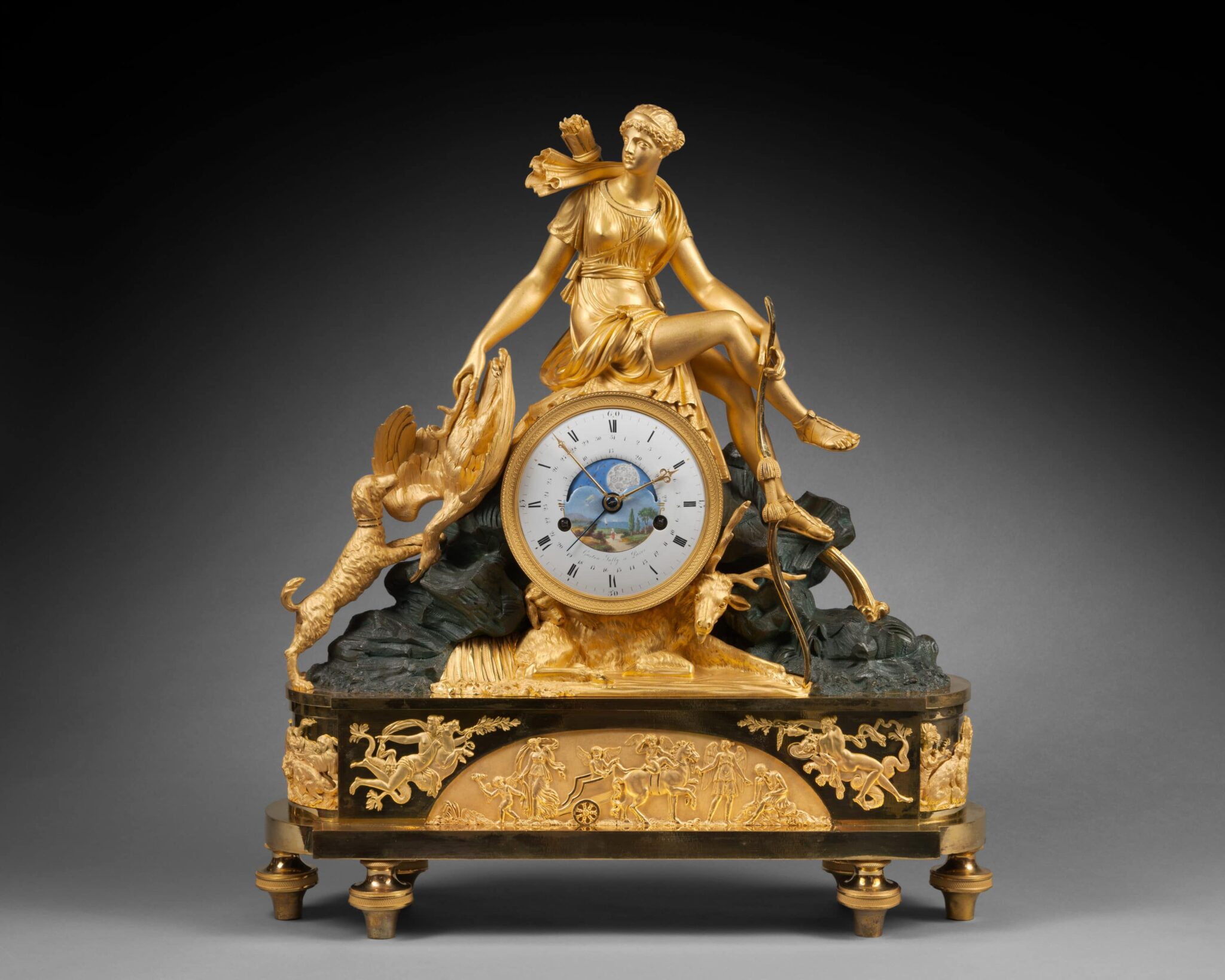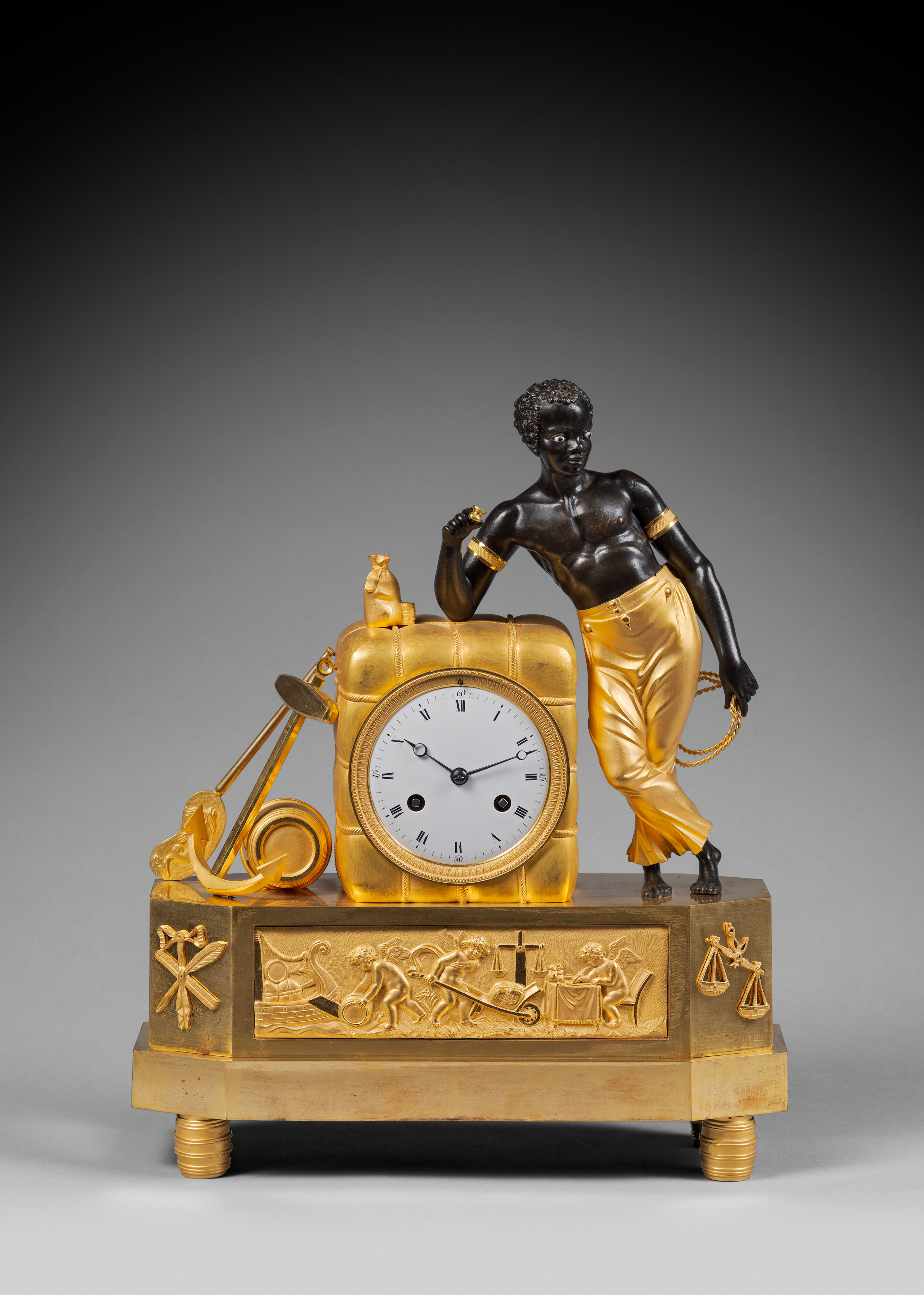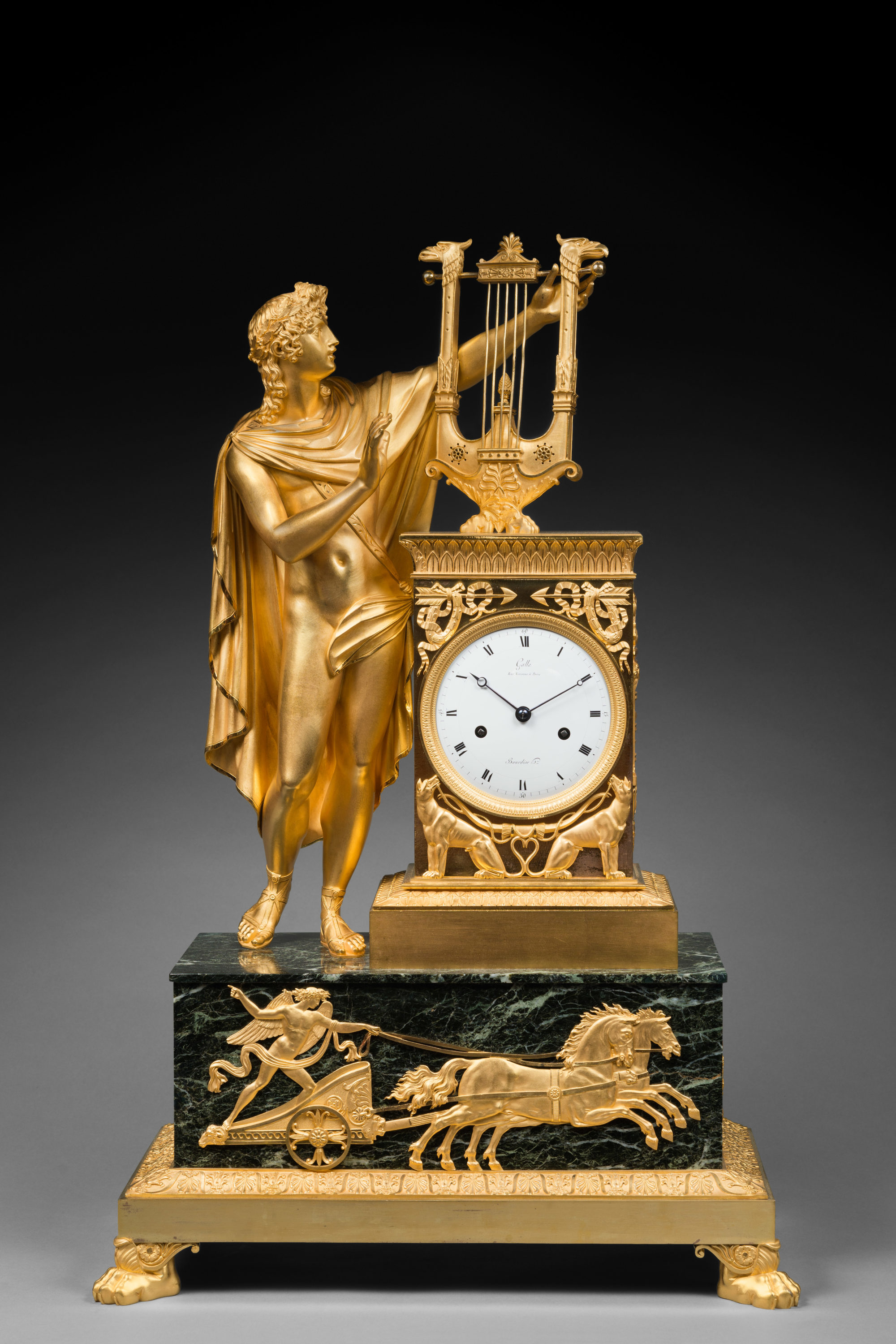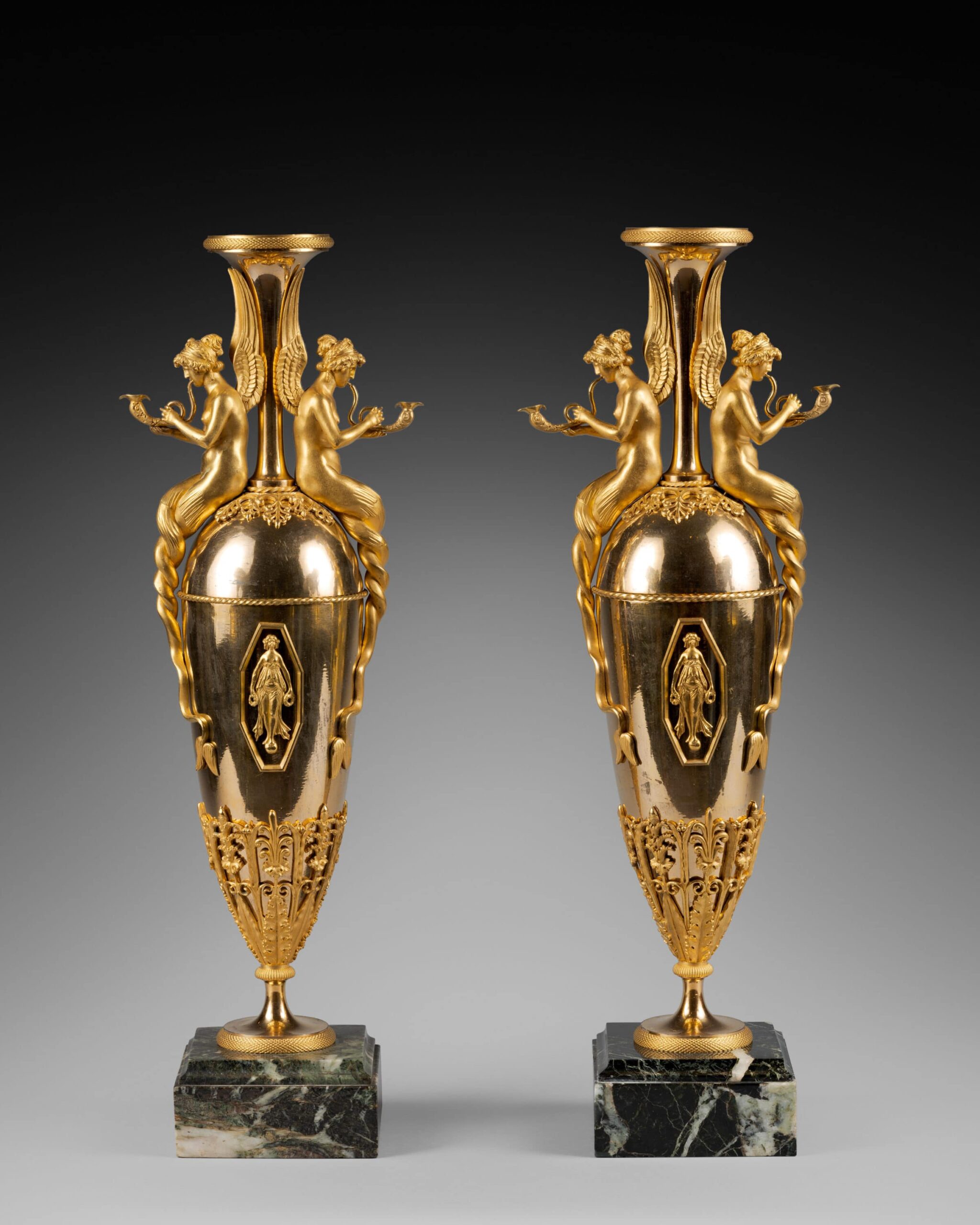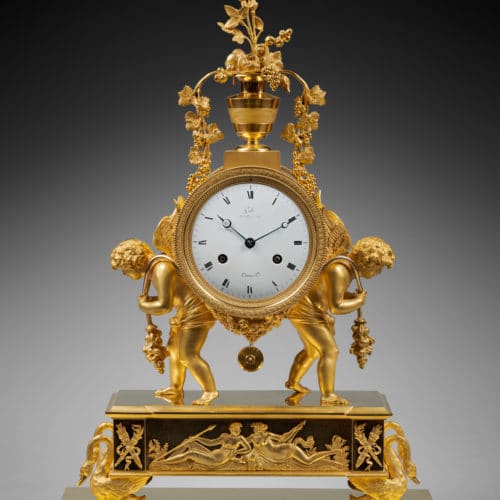Rare Gilt Bronze Mantel Clock with Gilt and Burnished Finishing
“The Winged Cupids”
The round white enamel dial, signed “Galle Rue Vivienne à Paris” and “Thomas Hr”, indicates the Roman numeral hours and the outermost minutes graduations by means of two blued steel Breguet hands. The hour and half-hour striking movement is housed in a finely chased gilt bronze case with matte and burnished finishing. The bezel is adorned with engine-turning and motifs of vine leaves, wheat sheaves and beads. The drum case is surmounted by an urn containing fruits and flowers and issuing grape vines. It is supported on the backs of two winged Cupids wearing loincloths. The shaped quadrangular base has a central reserve on its façade that is decorated with applied motifs of crossed quivers and torches and a low relief scene depicting Venus and Adonis reclining on a naturalistic terrain. The clock stands upon the backs of four swans with curving necks. A rectangular plinth, set on four flattened ball feet decorated with cord friezes, supports the clock.
Discover our entire collection of antique mantel clocks for sale online or at the gallery.
La Pendulerie is the specialist in fine and rare antique clocks, based in Paris.
The particularly elegant composition of the present rare mantel clock, as well as the exceptional quality of its chasing and gilding, are indicative of the talent and skill of Claude Galle, the bronze caster who made the case during the early years of the 19th century. Galle, one of the finest Parisian artisans of his time, was a colleague and rival of Pierre-Philippe Thomire.
The design was inspired by a model that is slightly older, since it features the Revolutionary calendar. That clock was bequeathed in late 1969 to the Lyon Musée des Arts décoratifs by Henri Baboin-Jaubert-Ecully. Its dial is by Manière, and it features two patinated bronze cupids that support the case housing the movement, which is surmounted by a cupid riding a lion (illustrated in the exhibition catalogue Ô Temps ! Suspends ton vol, Catalogue des pendules et horloges du Musée des Arts décoratifs de Lyon, Lyon, 2008, p. 85, catalogue n° 36).
Claude Galle (1759 - 1815)
One of the foremost bronziers and fondeur-ciseleurs of the late Louis XVI and Empire periods, Claude Galle was born at Villepreux near Versailles. He served his apprenticeship in Paris under the fondeur Pierre Foy, and in 1784 married Foy’s daughter. In 1786 he became a maitre-fondeur. After the death of his father-in-law in 1788, Galle took over his workshop, soon turning it into one the finest, and employing approximately 400 craftsmen. Galle moved to Quai de la Monnaie (later Quai de l’Unité), and then in 1805 to 60 Rue Vivienne.
The Garde-Meuble de la Couronne, under the direction of sculptor Jean Hauré from 1786-88, entrusted him with many commissions. Galle collaborated with many excellent artisans, including Pierre-Philippe Thomire, and furnished the majority of the furnishing bronzes for the Château de Fontainebleau during the Empire. He received many other Imperial commissions, among them light fittings, figural clock cases, and vases for the palaces of Saint-Cloud, the Trianons, the Tuileries, Compiègne, and Rambouillet. He supplied several Italian palaces, such as Monte Cavallo, Rome and Stupinigi near Turin.
In spite of his success, and due in part to his generous and lavish lifestyle, as well as to the failure of certain of his clients (such as the Prince Joseph Bonaparte) to pay what they owed, Galle often found himself in financial difficulty. Galle’s business was continued by his son after his death by his son, Gérard-Jean Galle (1788-1846). Today his work may be found in the world’s most important museums and collections, those mentioned above, as well as the Musée National du Château de Malmaison, the Musée Marmottan in Paris, the Museo de Reloges at Jerez de la Frontera, the Residenz in Munich, and the Victoria and Albert Museum in London.
Discover our entire collection of rare clocks on La Pendulerie Paris.
This clockmaker, who signed “Thomas à Paris”, often worked with the bronze caster Claude Galle. This Parisian clockmaker was active during the latter part of the 18th century and the early years of the following century. Through Galle, Thomas became known to Parisian connoisseurs of fine and luxury horology. Some of his pieces were mentioned during the early decades of the 19th century as being in the homes of important collectors, including two Napoleonic Marshals, Michel Ney, Prince of the Moskva and Duke of Elchingen, and Louis-Alexandre Berthier, prince of Wagram. Others were cited in the posthumous inventory of the wife of Louis-Amable-Auguste-Ursule-Achille de Sparre.
